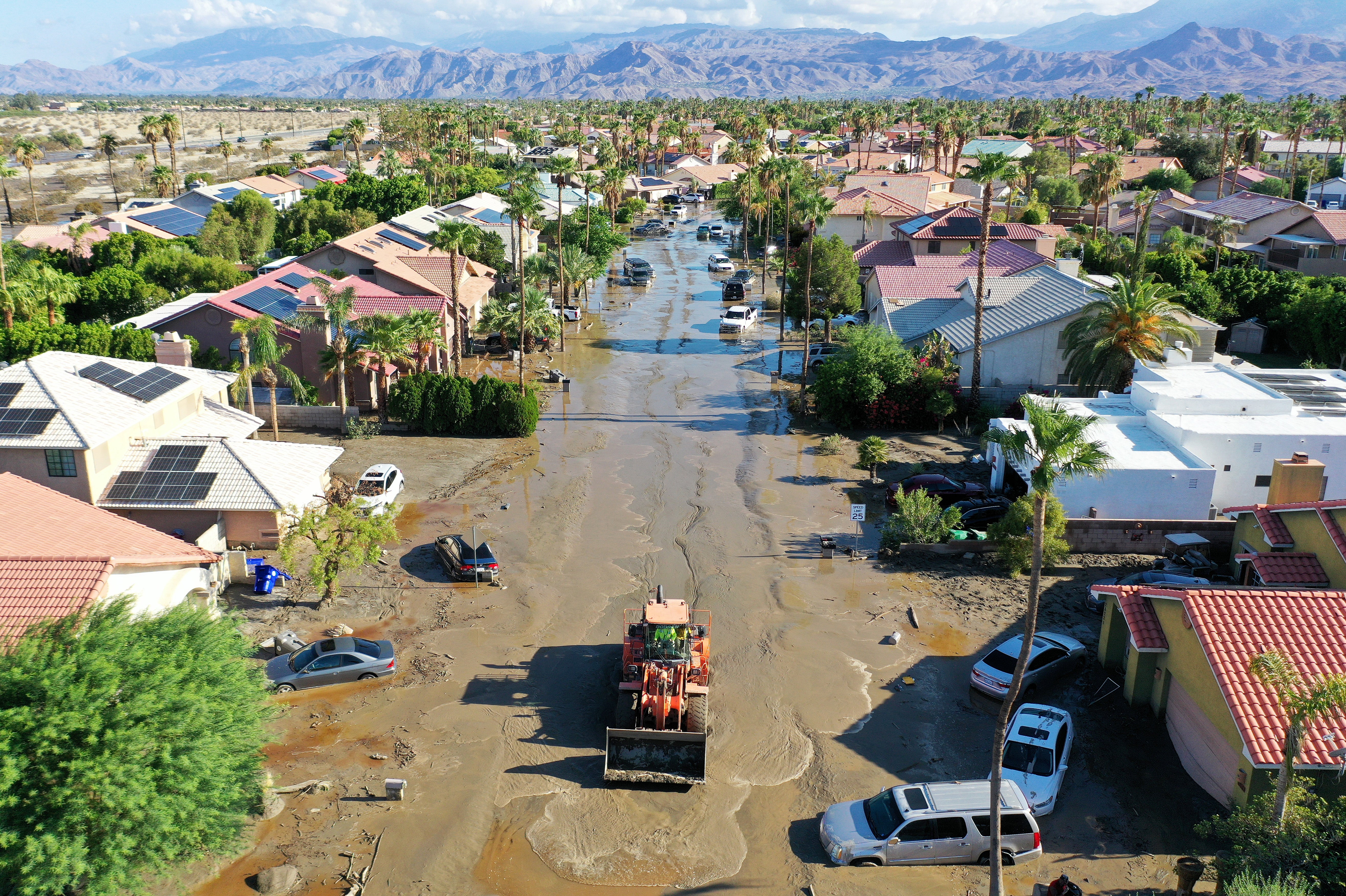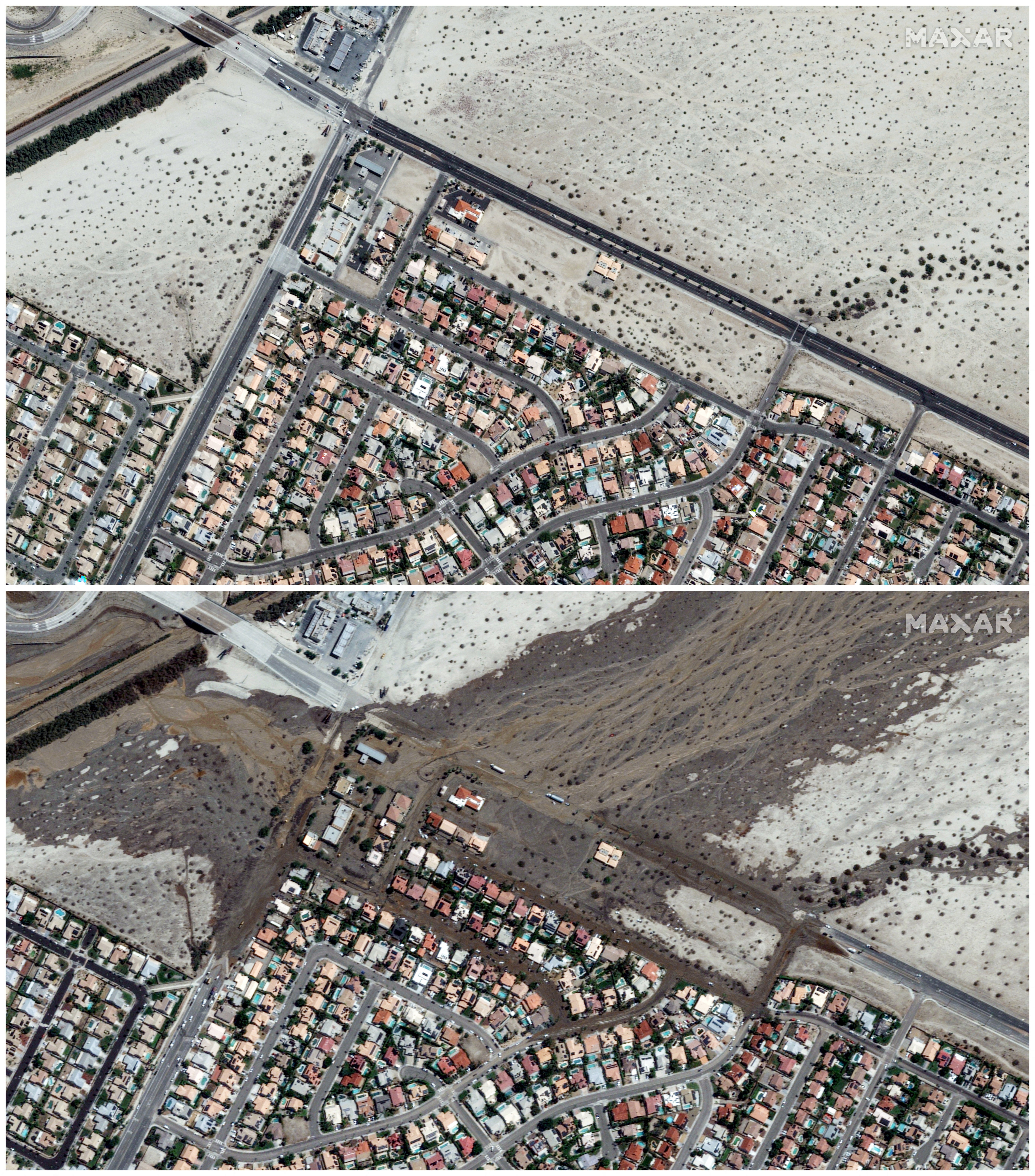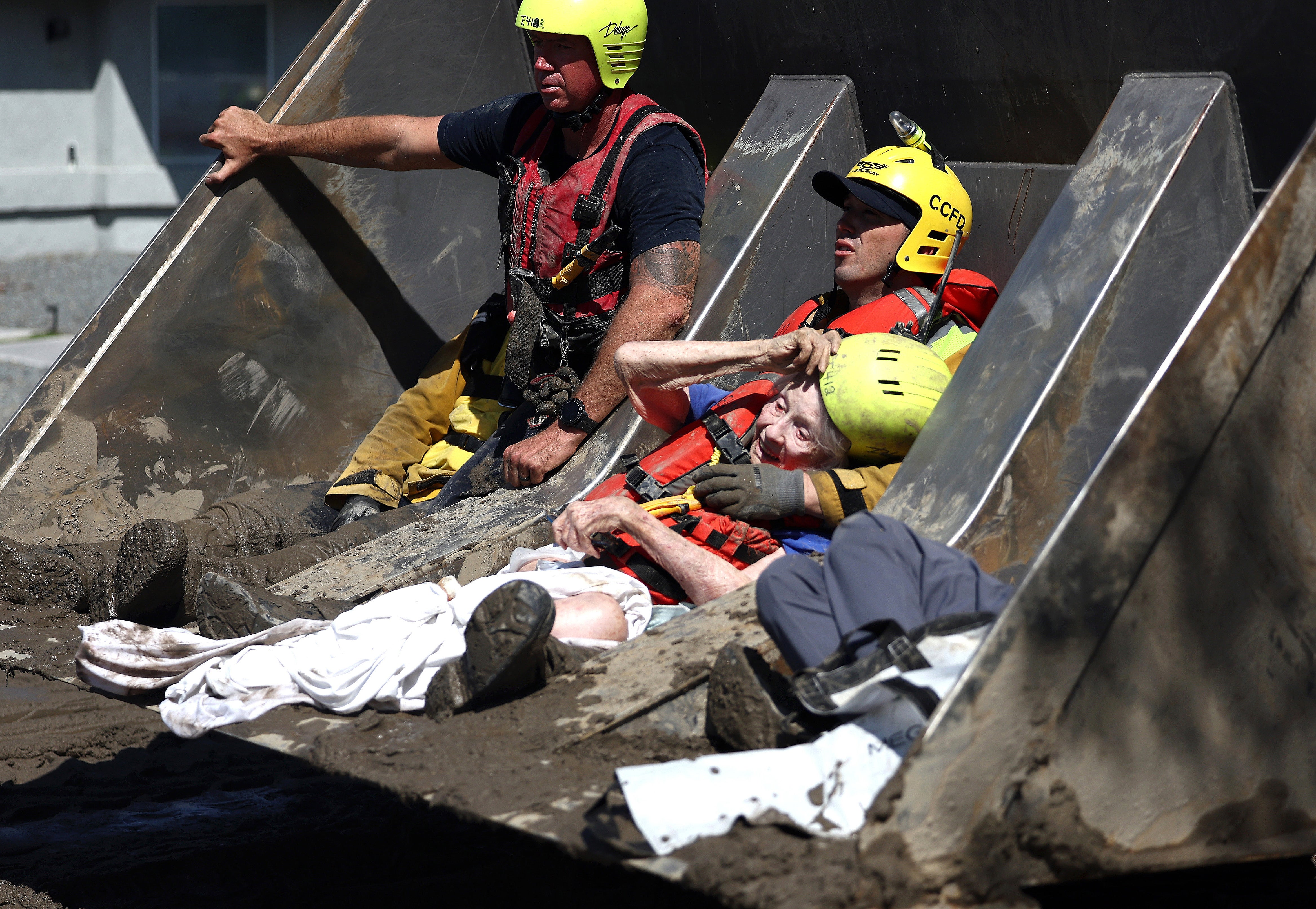Aerial images show rivers of mud in Palm Springs resort town following Tropical Storm Hilary
Widespread power outages impacted the region and led to a major hospital being evacuated in Los Angeles
Your support helps us to tell the story
From reproductive rights to climate change to Big Tech, The Independent is on the ground when the story is developing. Whether it's investigating the financials of Elon Musk's pro-Trump PAC or producing our latest documentary, 'The A Word', which shines a light on the American women fighting for reproductive rights, we know how important it is to parse out the facts from the messaging.
At such a critical moment in US history, we need reporters on the ground. Your donation allows us to keep sending journalists to speak to both sides of the story.
The Independent is trusted by Americans across the entire political spectrum. And unlike many other quality news outlets, we choose not to lock Americans out of our reporting and analysis with paywalls. We believe quality journalism should be available to everyone, paid for by those who can afford it.
Your support makes all the difference.Torrential mudflows caused by Tropical Storm Hilary have wreaked havoc across southern California, including in the resort town of Cathedral City where the scale of devastation was captured by aerial footage.
Hilary was the first tropical storm to hit California in almost a century and deluged cities including Los Angeles and San Diego before moving north into Nevada.
Officials in Palm Springs, California, announced that the city had been completely cut off by flooding on Monday. Meanwhile in Los Angeles, power outages led to a major hospital being evacuated in the Boyle Heights neighbourhood.
The clean-up was beginning on Tuesday after rivers of mud and torrential downpours swamped communities including a number of resort towns in the Coachella Valley.
Hilary first slammed into Mexico’s arid Baja California Peninsula as a hurricane, causing one death and widespread flooding before becoming a tropical storm as it moved into California.
So far no deaths, serious injuries or extreme damages have been reported in California, though officials warned that risks remain, especially in the mountainous regions where wet hillsides could unleash mudslides.
Flooding watches and warnings were issued for around half a dozen states further north on Tuesday even as Hilary’s power began to dissipate.
The slog of a clean-up began on Tuesday as crews began to dig out roads from mud and landslides, and residents waited for water to subside in homes and businesses.

In one dramatic scene, rescue officials in the desert community of Cathedral City, near Palm Springs, drove a bulldozer through the mud to a swamped care home and rescued 14 residents by scooping them up and carrying them to safety, Fire Chief Michael Contreras said.
“We were able to put the patients into the scoop. It’s not something that I’ve ever done in my 34 years as a firefighter, but disasters like this really cause us to have to look at those means of rescue that aren’t in the book and that we don’t do every day,” he said at a news conference.
It was one of 46 rescues the city performed between late Sunday night and the next afternoon from mud and water standing up to 5 feet (1.5 metres).

A new tropical storm made landfall in southern Texas on Tuesday facing flash flooding, strong winds and possible tornadoes from Harold which is set to make landfall around noon local time on Tuesday.
The tropical storms are the latest climate-linked disasters to impact the US this summer after devastating wildfires on the Hawaiian island of Maui and relentless, dangerous heat in many regions.
Tropical storms and hurricanes are being “supercharged” by the human-caused climate crisis, according to non-profit Climate Signals, and this year are receiving an extra boost of heat from El Nino, a recurring weather pattern in the Pacific.
Climate scientists have discovered that extra heat in the atmosphere is causing cyclones to pop up in unexpected locations, more rapidly intensify and produce more rain - leading to a greater toll on people, property and infrastructure.

AP contributed to this report.





Join our commenting forum
Join thought-provoking conversations, follow other Independent readers and see their replies
Comments